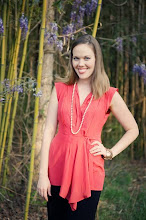About Me
Monday, April 19, 2010
A Video Tutorial on Painting Lavender on Glassware
An easy step by step video tutorial on how to paint Lavender Buds on your Glassware. Perfect for Mother's Day gifts. Here is a finished image:
Labels:
first day of spring,
lavender,
lesson,
mothers day,
video tutorial
Tuesday, April 13, 2010
Soapy Treats

I'm really excited to share this post with you. My friend Laura and I have been toying with vegan soap-making. We've made a few batches before--some more successful than others, but our most recent batch turned out far better than the rest. In fact, I think it rivals some of the finer soaps I've purchased from well established soap makers. I'd like to take you through a photo tutorial of how we created our soap. As you'll see in the photos it's a real ugly duckling story. We turned lumps of fats and oils into beautiful, sweet smelling, soapy treats. Here's how it starts:

We measure out the lye using a postal scale. I knew exactly what I was doing asking Laura to be my soap making partner. Laura, thankfully is more scientifically minded than myself. When I want to eyeball the measurements it's Laura who speaks up and says "Let's actually measure it out exactly Mary, so we don't die."

We pour the lye into cold water. We have to do this outside as the chemical reaction heats up the water instantly to well over 120 degrees. We have to let it sit and cool until it's the right temperature to add our oils and fats.

The fumes that come off from the lye and water are really intense. Laura and I will take turns stirring, rotating every 15-20 seconds it's that intense. You can feel a sharp, scary burn in your lungs if you get too close. We always keep a bottle of vinegar close by in case there is a spill. The vinegar will neutralize the lye. If any of you have seen the movie Fight Club you'll remember the vivid demonstration of how dangerous lye can be on the skin.

While we wait for the lye and water to cool down, we measure out our oils and fats. We wanted to make our soaps vegan. The idea of using lard or bacon fat like in the old days really grosses me out. In our most recent batch we used Olive Oil, Coconut Oil, Shea Butter, and Palm Oil. Everything gets measured out exactly and melted down in a large pot.

When the temperature of melted oils is within 10 degrees of our lye it's time to combine the two.

The lye is always poured into the oils rather than the oil into the lye. At this point the danger zone is over as the fats help to neutralize the lye.

Once the two mixtures are combined it's time to mix. Our first batch we used simply a metal whisk and the whole process took well over 3 hours. Thanks to a purchase of this cheap immersion blender the mixing time takes only about 10 minutes.

The soap is ready to pour when tracing occurs. Tracing is when the soap changes from a thick liquid to more like cake batter. It is at trace that we added our spearamint essential oils to give the soap a refreshing scent.

Pour the soap into a wax lined cardboard box. It will sit in this box for a few weeks while the soap hardens and cures.

Laura and I added cosmetic grade French green clay to our soap. French green clay is great for facial masks and is known to draw impurities out of the skin.

A few weeks later the soap has hardened and is ready to cut.



We found this soap to be so fabulous that a tiny amount goes a long way. It lathers quickly and the soapy lather is silky and luxurious. I cut the bars down further into tiny squares and wrapped them in bits of silk that I had previously marbled.

The end result is a precious little bar that smells of delicate spearamint. I think they look lovely dusted with the green clay. A little bit goes a long way so if you're one of the lucky ones to get a bar use it sparingly!



Labels:
french green clay,
homemade soap,
silks,
soaps,
spearamint
Subscribe to:
Comments (Atom)



